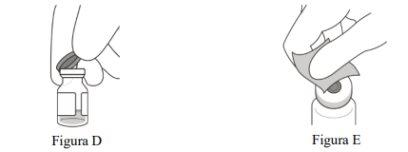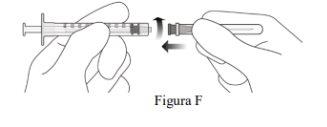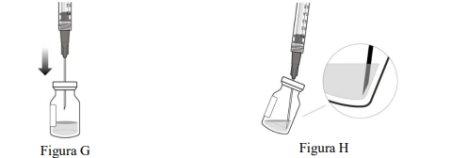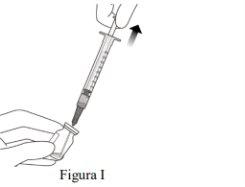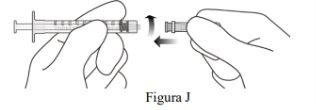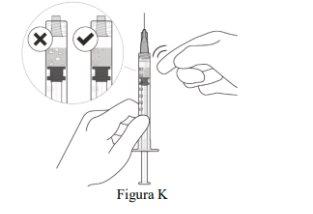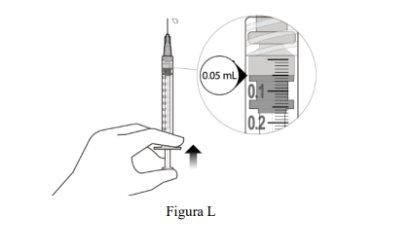
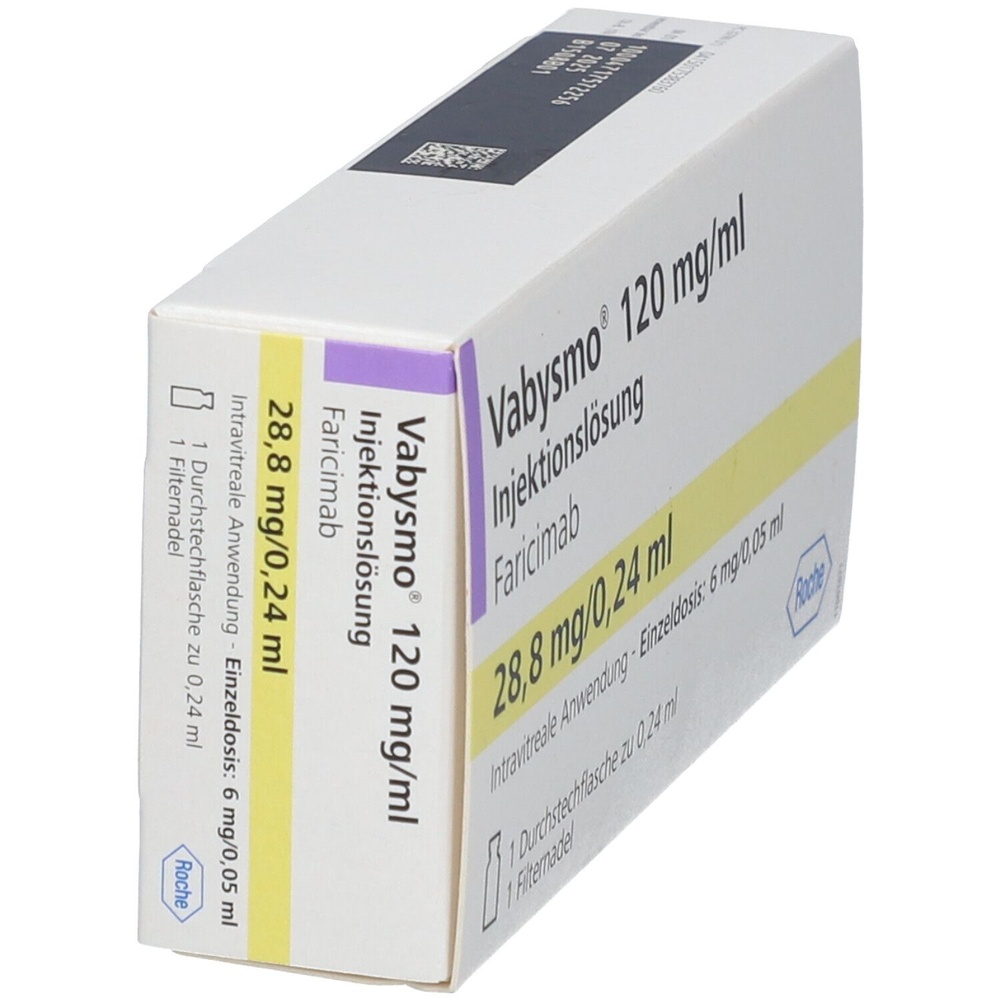
ВАБИСМО 120 мг/мл раствор для инъекций

Спросите врача о рецепте на ВАБИСМО 120 мг/мл раствор для инъекций

Инструкция по применению ВАБИСМО 120 мг/мл раствор для инъекций
Введение
Инструкция: информация для пациента
Вабисмо 120 мг/мл раствор для инъекций
фарicíмаб
Этот препарат подлежит дополнительному наблюдению, что ускорит обнаружение новой информации о его безопасности. Вы можете способствовать этому, сообщая о любых нежелательных реакциях, которые у вас могут возникнуть. В конце раздела 4 содержится информация о том, как сообщать о этих нежелательных реакциях.
Прочитайте внимательно всю инструкцию перед началом использования этого препарата, поскольку она содержит важную информацию для вас.
- Сохраните эту инструкцию, поскольку вам может потребоваться прочитать ее снова.
- Если у вас есть какие-либо вопросы, проконсультируйтесь с вашим врачом.
- Если вы испытываете нежелательные реакции, проконсультируйтесь с вашим врачом, даже если они не указаны в этой инструкции. См. раздел 4.
Содержание инструкции
- Что такое Вабисмо и для чего он используется
- Что нужно знать перед началом использования Вабисмо
- Как использовать Вабисмо
- Возможные нежелательные реакции
- Хранение Вабисмо
- Состав и дополнительная информация
1. Что такое Вабисмо и для чего он используется
Вабисмо содержит активное вещество фарicíмаб, которое относится к группе препаратов, называемых антиангиогенезными агентами.
Вабисмо вводится в глаз вашим врачом для лечения глазных расстройств у взрослых, называемых:
- возрастной макулярной дегенерацией с новообразованием сосудов (экссудативной) (ВМДн),
- нарушением зрения, вызванным диабетическим макулярным отеком (ДМО).
- нарушением зрения, вызванным отеком макулы из-за блокировки вен сетчатки (окклюзии ветви вены сетчатки (ОВС) или окклюзии центральной вены сетчатки (ОЦВС)).
Эти расстройства поражают макулу, центральную часть сетчатки (светочувствительный слой в задней части глаза), которая отвечает за острое и центральное зрение. ВМДн возникает из-за роста аномальных кровеносных сосудов, которые позволяют проникать крови и жидкости в макулу, а ДМО возникает из-за повреждения кровеносных сосудов, что приводит к отеку макулы. ОЦВС - это блокировка основного кровеносного сосуда (вены), который несет кровь из сетчатки, а ОВС - это блокировка одной из более мелких ветвей вены. Из-за увеличения давления внутри вен происходит утечка жидкости в сетчатку, что приводит к отеку макулы (макулярному отеку).
Как работает Вабисмо
Вабисмо распознает и специфически блокирует активность определенных белков, известных как ангиопоэтин-2 и фактор роста эндотелия сосудов А. Когда эти белки присутствуют в повышенных концентрациях, они могут вызывать рост аномальных кровеносных сосудов и/или повреждение нормальных сосудов, с утечкой в макулу, что приводит к отеку или повреждению, которое может негативно повлиять на зрение. Связываясь с этими белками, Вабисмо может блокировать их действие и предотвратить аномальный рост сосудов, утечку и отек. Вабисмо может улучшить заболевание и/или замедлить его прогрессирование, и таким образом сохранить или даже улучшить ваше зрение.
2. Что нужно знать перед началом использования Вабисмо
Не используйте Вабисмо:
- если вы аллергичны к фарicíмабу или любому из других компонентов этого препарата (перечисленных в разделе 6).
- если у вас есть активная инфекция или подозрение на нее в глазу или вокруг него.
- если у вас есть боль или покраснение в глазу (воспаление глаза).
Если вы находитесь в одной из этих ситуаций, сообщите об этом вашему врачу. Вам не должны вводить Вабисмо.
Предостережения и меры предосторожности
Проконсультируйтесь с вашим врачом перед началом использования Вабисмо:
- если у вас есть глаукома (заболевание глаза, обычно вызванное высоким давлением в глазу).
- если у вас есть история появления вспышек, светов или плавающих точек (плавающие точки в глазу) и если у вас внезапно увеличилось количество плавающих точек.
- если вы перенесли операцию на глазах в течение последних 4 недель или если операция на глазах запланирована на следующие 4 недели.
- если у вас когда-либо была глазная болезнь или глазное лечение.
Немедленно проконсультируйтесь с вашим врачом, если:
- у вас внезапно ухудшилось зрение.
- у вас есть признаки возможной инфекции или воспаления глаза, такие как ухудшение покраснения глаза, боль в глазу, увеличение дискомфорта в глазу, размытое или пониженное зрение, увеличение количества мелких точек в поле зрения, повышенная чувствительность к свету.
Кроме того, важно знать, что:
- безопасность и эффективность Вабисмо при введении в оба глаза одновременно не были изучены, и использование его таким образом может привести к увеличению риска нежелательных реакций.
- инъекции Вабисмо могут вызвать временное увеличение давления в глазу (давление внутри глаза) у некоторых пациентов в течение 60 минут после инъекции. Ваш врач будет следить за этим после каждой инъекции.
- Ваш врач проверит, есть ли у вас другие факторы риска, которые могут увеличить вероятность разрыва или отслойки одной из слоев задней части глаза (отслойка или разрыв сетчатки, и отслойка или разрыв пигментного эпителия сетчатки), в этом случае Вабисмо будет введен с осторожностью.
Когда вводятся некоторые препараты, подобные Вабисмо, известно, что существует риск образования тромбов, блокирующих кровеносные сосуды (тромбоэмболические события), которые могут привести к инфаркту или инсульту. Поскольку небольшое количество препарата попадает в кровь, существует теоретический риск этих событий после инъекции Вабисмо в глаз.
Опыт ограничен при лечении:
- пациентов с активными инфекциями.
- пациентов с ВМДн и пациентов с окклюзией вены сетчатки (ОВС) в возрасте 85 лет и старше.
- пациентов с ДМО, вызванным диабетом 1-го типа.
- диабетиков с высокими средними значениями сахара в крови (гликированный гемоглобин выше 10%).
- диабетиков с глазным заболеванием, вызванным диабетом, известным как пролиферативная диабетическая ретинопатия.
- диабетиков с высоким артериальным давлением, превышающим 140/90 мм рт. ст. и заболеванием кровеносных сосудов.
- пациентов с ДМО, получающих инъекции с интервалом менее 8 недель в течение длительного периода.
Опыт ограничен при лечении пациентов, получающих инъекции с интервалом менее 8 недель в течение длительного периода, и эти пациенты могут иметь более высокий риск нежелательных реакций.
Нет опыта при лечении:
- диабетиков или пациентов с ОВС с неконтролируемым высоким артериальным давлением.
Если что-либо из вышеперечисленного относится к вам, ваш врач будет учитывать отсутствие информации при лечении вас Вабисмо.
Дети и подростки
Использование Вабисмо не было изучено у детей и подростков, поскольку ВМДн, ДМО и ОВС в основном встречаются у взрослых.
Другие препараты и Вабисмо
Сообщите вашему врачу, если вы используете, недавно использовали или можете использовать любой другой препарат.
Беременность илактация
Вабисмо не был изучен у беременных женщин. Вабисмо не должен использоваться во время беременности, если только потенциальная польза для пациента не превышает потенциальный риск для нерожденного ребенка.
Если вы беременны или кормите грудью, считаете, что можете быть беременной или планируете стать беременной, проконсультируйтесь с вашим врачом перед использованием этого препарата.
Не рекомендуется кормить грудью во время лечения Вабисмо, поскольку неизвестно, выделяется ли Вабисмо в грудное молоко.
Женщины, которые могут стать беременными, должны использовать эффективный метод контрацепции во время лечения и в течение как минимум 3 месяцев после окончания лечения Вабисмо. Если вы становитесь беременной или считаете, что можете быть беременной во время лечения, немедленно сообщите об этом вашему врачу.
Вождение и использование машин
После инъекции Вабисмо вы можете испытывать временные проблемы со зрением (например, размытое зрение). Не водите и не используйте машины, пока эти проблемы сохраняются.
Вабисмо содержит натрий
Этот препарат содержит менее 1 ммоль натрия (23 мг) на дозу, что означает, что он практически не содержит натрия.
Вабисмо содержит полисорбат
Этот препарат содержит 0,02 мг полисорбата в каждой дозе 0,05 мл. Полисорбаты могут вызывать аллергические реакции. Проконсультируйтесь с вашим врачом, если у вас есть известная аллергия.
3. Как использовать Вабисмо
Как вводится Вабисмо
Рекомендуемая доза составляет 6 мг фарicíмаба.
Возрастная макулярная дегенерация с новообразованием сосудов (экссудативная) (ВМДн)
- Вам будет введена инъекция каждый месяц в течение первых 3 месяцев.
- Затем вам будут вводить инъекции каждые 4 месяца. Ваш врач определит частоту инъекций на основе состояния вашего глаза.
Диабетический макулярный отек (ДМО) и макулярный отек, вызванный окклюзией вены сетчатки (окклюзия ветви вены сетчатки (ОВС) или окклюзия центральной вены сетчатки (ОЦВС))
- Вам будет введена инъекция каждый месяц в течение как минимум 3 месяцев.
- Затем вам могут вводить инъекции реже. Ваш врач определит частоту инъекций на основе состояния вашего глаза.
Способ введения
Вабисмо вводится в глаз (интравитреальная инъекция) опытным врачом, который вводит глазные инъекции.
Перед инъекцией ваш врач использует глазный дезинфицирующий раствор, чтобы тщательно очистить ваш глаз и предотвратить инфекцию. Ваш врач также даст вам глазные капли (местный анестетик), чтобы онемить глаз и уменьшить или предотвратить боль от инъекции.
Как долго длится лечение Вабисмо
Это долгосрочное лечение, которое может продолжаться месяцами или годами. Ваш врач будет регулярно наблюдать за состоянием вашего глаза, чтобы проверить, имеет ли лечение желаемый эффект. В зависимости от того, как вы реагируете на лечение Вабисмо, ваш врач может изменить частоту доз.
Если вы пропустите дозу Вабисмо
Если вы пропустите дозу, запишитесь на новую встречу с вашим врачом как можно скорее.
Если вы прекратите лечение Вабисмо
Проконсультируйтесь с вашим врачом перед прекращением лечения. Прекращение лечения может увеличить риск потери зрения, и ваше зрение может ухудшиться.
Если у вас есть какие-либо другие вопросы о использовании этого препарата, проконсультируйтесь с вашим врачом.
4. Возможные нежелательные реакции
Как и все препараты, Вабисмо может вызывать нежелательные реакции, хотя не все люди испытывают их.
Нежелательные реакции на инъекции Вабисмо могут быть как препаратом, так и процедурой инъекции и могут повлиять на глаз в основном.
Некоторые нежелательные реакции могут быть серьезными
Свяжитесь с вашим врачом немедленно, если у вас есть какие-либо из следующих симптомов, которые являются признаками аллергических реакций, воспаления или инфекций:
- боль в глазу, увеличение дискомфорта, ухудшение покраснения глаза, размытое или пониженное зрение, увеличение количества мелких точек в поле зрения, повышенная чувствительность к свету - это признаки возможной глазной инфекции, воспаления или аллергической реакции.
- внезапное ухудшение зрения.
Другие возможные нежелательные реакции
Другие нежелательные реакции, которые могут возникнуть после лечения Вабисмо, включают те, которые перечислены ниже.
Многие из этих нежелательных реакций являются легкими или умеренными и обычно проходят в течение недели после каждой инъекции.
Свяжитесь с вашим врачом, если какой-либо из этих нежелательных реакций становится серьезным.
Очень часто(могут возникнуть у более 1 из 10 человек):
- Нет
Часто(могут возникнуть у до 1 из 10 человек):
- Помутнение хрусталика в глазу (катаракта)
- Разрыв одного из слоев задней части глаза (разрыв пигментного эпителия сетчатки, только при ВМДн)
- Отслойка вещества, подобного гелю, внутри глаза (отслойка витреума)
- Увеличение давления внутри глаза (повышение давления внутри глаза)
- Кровотечение из мелких кровеносных сосудов внешнего слоя глаза (конъюнктивальное кровотечение)
- Плавающие точки или темные тени в поле зрения (плавающие точки в витреуме)
- Боль в глазу
Не часто(могут возникнуть у до 1 из 100 человек):
- Серьезное воспаление или инфекция внутри глаза (эндофтальмит)
- Воспаление вещества, подобного гелю, внутри глаза/красный глаз (витрит)
- Воспаление радужной оболочки и прилегающих тканей глаза (ирицит, иридоциклит, увеит)
- Кровотечение внутри глаза (вitreальное кровотечение)
- Дискомфорт в глазу
- Зуд (зуд в глазу)
- Разрыв сетчатки (задняя часть глаза, которая обнаруживает свет)
- Красный глаз (гиперемия глаза/конъюнктивы)
- Чувство наличия чего-то в глазу
- Размытое зрение
- Понижение остроты зрения (снижение остроты зрения)
- Боль во время процедуры
- Отслойка сетчатки
- Увеличение слезотечения (повышение слезотечения)
- Царапина на роговице, повреждение прозрачной части глаза, которая покрывает радужную оболочку (царапина на роговице)
- Раздражение глаза
Редко(могут возникнуть у до 1 из 1000 человек):
- Временное понижение остроты зрения (временное снижение остроты зрения)
- Помутнение хрусталика из-за травмы (травматическая катаракта)
Частота не известна
- Васкулит сетчатки (воспаление кровеносных сосудов глаза)
- Васкулит, блокирующий кровеносные сосуды глаза (блокировка кровеносных сосудов глаза, обычно в присутствии воспаления)
Когда вводятся некоторые препараты, подобные Вабисмо, известно, что существует риск образования тромбов, блокирующих кровеносные сосуды (тромбоэмболические события), которые могут привести к инфаркту или инсульту. Поскольку небольшое количество препарата попадает в кровь, существует теоретический риск этих событий после инъекции Вабисмо в глаз.
Сообщение о нежелательных реакциях
Если вы испытываете любую нежелательную реакцию, проконсультируйтесь с вашим врачом, даже если она не указана в этой инструкции. Вы также можете сообщить о них напрямую через национальную систему уведомления, включенную в Приложение V*. Сообщая о нежелательных реакциях, вы можете способствовать предоставлению более полной информации о безопасности этого препарата.
5. Хранение Вабисмо
Ваш врач, фармацевт или медсестра отвечает за хранение этого препарата и правильную утилизацию любого неиспользованного продукта. Ниже приведенная информация предназначена для медицинских специалистов.
Храните этот препарат в недоступном для детей месте.
Не используйте этот препарат после даты истечения срока годности, указанной на этикетке и упаковке после EXP. Дата истечения срока годности - последний день месяца, указанного.
Храните в холодильнике (2°C - 8°C).
Не замораживайте.
Храните в наружной упаковке, чтобы защитить от света.
До использования нераспечатанный флакон может храниться при комнатной температуре от 20°C до 25°C в течение 24 часов.
6. Содержание упаковки и дополнительная информация
Состав Вабисмо
- Активное вещество - фарicíмаб. 1 мл раствора содержит 120 мг фарicíмаба. Каждая ампула содержит 28,8 мг фарicíмаба в 0,24 мл раствора. Это обеспечивает полезную дозу для выпуска единой дозы 0,05 мл раствора, содержащего 6 мг фарicíмаба.
- Другие компоненты: L-гистидин, уксусная кислота 30% (E 260), L-метионин, хлорид натрия, сахароза, полисорбат 20 (E 432), вода для инъекционных препаратов (см. Раздел 2 «Вабисмо содержит натрий и полисорбат»).
Внешний вид продукта и содержание упаковки
Вабисмо - это прозрачный или опалесцирующий раствор от бесцветного до желтовато-коричневого.
Упаковка содержит стеклянную ампулу и стерильную тупую иглу с фильтром (калибр 18 х 1,5 дюйма, 1,2 мм х 40 мм, 5 мкм) для одноразового использования.
Владелец разрешения на маркетинг и ответственное лицо за производство
Roche Registration GmbH
Эмиль-Барелл-Штрассе 1
79639
Гренцах-Вайлен
Германия
Производитель
Roche Pharma AG
Эмиль-Барелл-Штрассе 1
79639
Гренцах-Вайлен
Германия
Для получения дополнительной информации о этом лекарственном средстве можно обратиться к местному представителю владельца разрешения на маркетинг:
Бельгия/Белгique/Бельгия N.V. Roche S.A. Тел.: +32 (0) 2 525 82 11 | Литва UAB «Roche Lietuva» Тел.: +370 5 2546799 |
| Люксембург/Люксбург (См. Бельгию/Бельгию) |
Чешская Республика Roche s. r. o. Тел.: +420 - 2 20382111 | Венгрия Roche (Венгрия) Кфт. Тел.: +36 - 1 279 4500 |
Дания Roche Pharmaceuticals A/S Тел.: +45 - 36 39 99 99 | Мальта (См. Ирландию) |
Германия Roche Pharma AG Тел.: +49 (0) 7624 140 | Нидерланды Roche Nederland B.V. Тел.: +31 (0) 348 438050 |
Эстония Roche Eesti OÜ Тел.: + 372 - 6 177 380 | Норвегия Roche Norge AS Тел.: +47 - 22 78 90 00 |
Греция Roche (Эллас) АЕ Тел.: +30 210 61 66 100 | Австрия Roche Austria GmbH Тел.: +43 (0) 1 27739 |
Испания Roche Farma S.A. Тел.: +34 - 91 324 81 00 | Польша Roche Polska Sp.z o.o. Тел.: +48 - 22 345 18 88 |
Франция Roche Тел.: +33 (0) 1 47 61 40 00 | Португалия Roche Farmacêutica Química, Lda Тел.: +351 - 21 425 70 00 |
Хорватия Roche d.o.o Тел.: +385 1 4722 333 | Румыния Roche România S.R.L. Тел.: +40 21 206 47 01 |
Ирландия Roche Products (Ирландия) Ltd. Тел.: +353 (0) 1 469 0700 | Словения Roche farmacevtska družba d.o.o. Тел.: +386 - 1 360 26 00 |
Исландия Roche Pharmaceuticals A/S c/o Icepharma hf Тел.: +354 540 8000 | Словакия Roche Slovensko, s.r.o. Тел.: +421 - 2 52638201 |
Италия Roche S.p.A. Тел.: +39 - 039 2471 | Финляндия Roche Oy Тел.: +358 (0) 10 554 500 |
| Швеция Roche AB Тел.: +46 (0) 8 726 1200 |
Латвия Roche Latvija SIA Тел.: +371 - 6 7039831 | Великобритания (Северная Ирландия) Roche Products (Ирландия) Ltd. Тел.: +44 (0) 1707 366000 |
Дата последнего пересмотра этой инструкции:
Подробная информация о этом лекарственном средстве доступна на сайте Европейского агентства по лекарственным средствам: https://www.ema.europa.eu.
Эта информация предназначена только для медицинских специалистов:
Инструкции по использованию ампулы:
До начала: | |
Внимательно прочитайте все инструкции перед использованием Вабисмо. | |
Упаковка Вабисмо включает стеклянную ампулу и стерильную тупую иглу с фильтром. Стеклянная ампула предназначена для одноразового использования. Игла с фильтром предназначена для одноразового использования. | |
Вабисмо должен храниться в холодильнике при температуре от 2 °C до 8 °C. Незамораживать. Невстряхивать. | |
Дайте Вабисмо достичь комнатной температуры от 20 °C до 25 °C перед продолжением введения. Храните ампулу в оригинальной упаковке, чтобы защитить ее от света. | |
Ампула Вабисмо может храниться при комнатной температуре до 24 часов. | |
Ампула Вабисмо должна быть визуально осмотрена перед введением. Вабисмо - это прозрачный или опалесцирующий раствор от бесцветного до желтовато-коричневого. | |
Неиспользовать, если видны частицы, если он имеет мутный вид или если он обесцвечен. | |
Неиспользовать, если упаковка, ампула и/или игла с фильтром просрочены, повреждены или были изменены (см. Фигуру А) | |
Используйте асептическую технику для подготовки инъекции. |
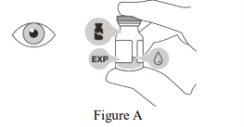
Соберите элементы:
|
|
|
|
Перенести лекарство из ампулы в шприц |
|
|
|
|
|
|
Присоединить иглу для инъекции |
|
Не используйте иглу для переноса с фильтром для инъекции. |
|
|
Удалить пузырьки воздуха и отрегулировать дозу лекарства |
|
|
|
|
|
Избыточный объем должен быть удален перед инъекцией. Доза инъекции должна быть установлена на отметке 0,05 мл, чтобы избежать передозировки. Утилизация неиспользованного лекарства и всех материалов, которые вступили в контакт с ним, будет осуществляться в соответствии с местными правилами. |
- Страна регистрации
- Активное вещество
- Требуется рецептДа
- Производитель
- Информация носит справочный характер и не является медицинской рекомендацией. Перед приемом любых препаратов проконсультируйтесь с врачом. Oladoctor не несет ответственности за медицинские решения, принятые на основе этого контента.
- Аналоги ВАБИСМО 120 мг/мл раствор для инъекцийФорма выпуска: ИНЪЕКЦИОННЫЙ РАСТВОР, 120 мг/млАктивное вещество: ФарицимабПроизводитель: Roche Registration GmbhТребуется рецептФорма выпуска: ИНЪЕКЦИОННЫЙ РАСТВОР, 40 мг/млАктивное вещество: АфлиберцептПроизводитель: Sandoz GmbhТребуется рецептФорма выпуска: ИНЪЕКЦИОННЫЙ РАСТВОР, 40 мг/млАктивное вещество: АфлиберцептПроизводитель: Sandoz GmbhТребуется рецепт
Врачи онлайн по ВАБИСМО 120 мг/мл раствор для инъекций
Консультация по дозировке, побочным эффектам, взаимодействиям, противопоказаниям и продлению рецепта на ВАБИСМО 120 мг/мл раствор для инъекций – по решению врача и с учетом местных правил.







